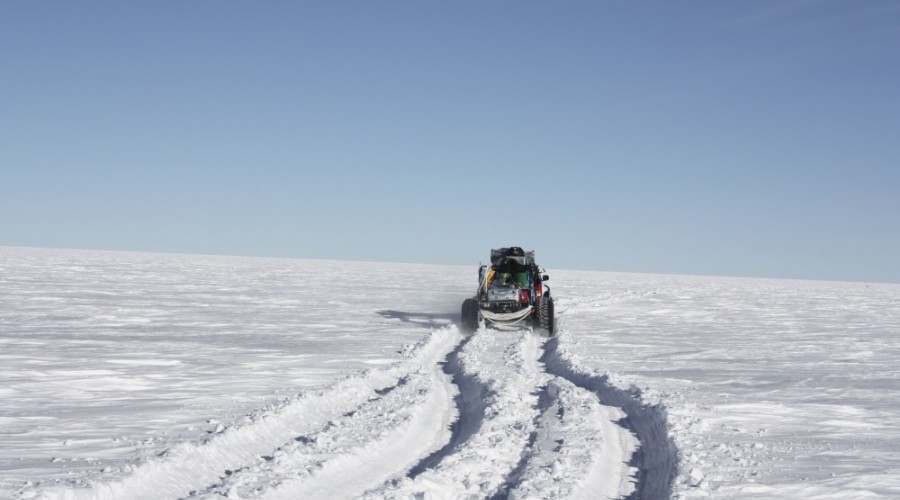It's all about Footprint!

During the construction of the Solar Voyager lots of thought is given to our ecological footprint in relation to the design. However, one footprint has to be big in a very literal sense: the ‘footprint’ of the wheel!
The Solar Voyager, which in its core is constructed of waste plastic and which is powered by solar energy, is designed for tough travel on Terra Incognita: Antarctica. The only truly unspoilt continent on earth, where nature rules. You don’t want to go there and leave a trail. So… Zero Waste and Zero Emission is the way to go.
During the construction of the Solar Voyager lots of thought is given to our ecological footprint in relation to the design. However, one footprint has to be big in a very literal sense: the ‘footprint’ of the wheel! The journey to the geographical South Pole is extreme. Temperatures way below zero and icy winds to cool you down even more. 24 hours of sunshine every day and a hole in the ozone layer make it necessary to protect yourself very well. The endless variety in surface conditions provide a need for different kinds of wheels. But since there are no opportunities for pit stops and it’s impossible to take too many materials along, we needed to design the Arctic Wheel.
A lot of research has been done on wheels and tires. The automotive industry is very experienced. Still, all of this knowledge is hardly usable. The voyages of the vehicles that have driven across Antarctica haven’t been sufficiently documented for our purposes. So, we’re in need of some trial and error.
There are many challenges. Sometimes the snow hardly provides support. You then need buoyancy. But some stretches of the terrain are rugged and therefore do provide support. Then there are ice waves as well, which can demolish your material and your crew. The Antarctic Wheel needs to face all these challenges. Because coming to a halt can be downright dangerous on Antarctica.
How to create a wheel that can survive all these challenges, while consisting of the smallest amount of parts as possible? Because what you don’t have, cannot get damaged. And even when we know what the wheel should look like, are we sure it’s a wheel that doesn’t create too much rolling resistance? Can the Solar Voyager provide enough energy to power the wheels on a 2300 kilometer journey within 30 days?
After lots of research and discussions, three concepts remained. Two based on an inflatable tire and one based on a hard wheel principle. After extensive testing and many more discussions, we discovered how to make an Arctic Wheel.
We’ve chosen for an inflatable tire with an Endumax net to guarantee shape stability. This seems to be the tire that’s best capable of facing the many different circumstances on Antarctica. Test results are providing us with ever growing confidence.
The Arctic Wheel creates a large footprint in the snow, which prevents us from sinking into the snowy surface. This helps us to use energy efficiently. Developing the Solar Voyager is quite an adventure, during which many discoveries are done. Who could have thought that you need a big footprint in order to travel as sustainably as possible?
Support Zero Waste!
With your help we can inspire and activate people and companies to see plastic not as waste, but as valuable resource.
